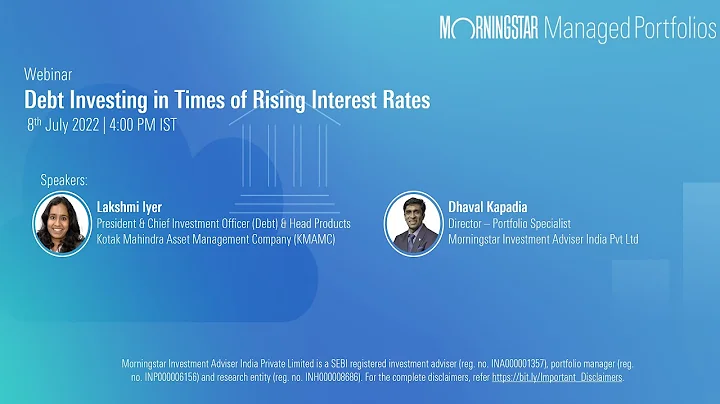Tonight, the Fed favorite inflation indicator - PCE price index will be released. Judging from the current market performance, inflation data has become the indicator that investors are most concerned about. What exactly is PCE and what impact does it have on the market?
1. Market inflation first looks at CPI, but the Fed prefers PCE
First of all, you can find that with the recent surge in commodities, "inflation" and "price increases" have become the most important factors affecting the capital market.

The most popular issues in the US market are the strong economic growth of the United States and the continuously explosive inflation data. There are two more important inflation data in the United States, one is the CPI (Consumer Price Index) that the market values and the other is the PCE price index that the Federal Reserve values . It should be noted that both CPI and PCE are the most important inflation indicators in the United States, but why does the Fed focus on the PCE price index? What is the difference between these two data? Why is it favored by different audiences? With these questions in mind, my friend continued reading.
2. What is the PCE price index?
The PCE price index is the Personal Consumption Expenditures Price Index. Like the CPI (Consumer Price Index), it reflects price changes in consumer goods and services.
In addition, PCE measures changes in the prices of goods and services consumed by all households and nonprofit institutions that serve households. It can be seen that the PCE price index includes both expenditures made directly by or on behalf of households, as well as non-market prices (indirect expenditure prices) of goods and services that households benefit from, and is more broadly representative.
Even though the PCE price index has the word "personal" in its name, in fact it is entirely based on a survey of changes in the composition of products on the shelves of companies. It should also be noted that unlike CPI which is based on a fixed basket of goods, PCE is used to find the average increase in the price of all domestic personal consumer goods, which can reflect the price at which consumers purchase substitute products due to price changes. For example, when the price of bread increases and people buy less bread, PCE will use new products to replace bread. Substituting cheaper goods will make the entire index relatively low.
3. What is the difference between PCE and CPI?
The Consumer Price Index (CPI) is the inflation data that every country pays attention to. It is also called core inflation data and a directional indicator. But why does the Federal Reserve pay more attention to the market impact brought by the PCE indicator?
According to a previous research report by Guohai Securities , the specific differences between PCE and CPI are as follows:
- 1. The weight of the commodity basket is different.
CPI focuses on reflecting the price changes of the consumption basket of "urban residents", while PCE is in urban areas. In addition to residents, the consumption of rural residents and non-profit organizations (such as the government) is taken into consideration, so the weights of many projects are very different from the CPI. For example, the weight of housing projects in the CPI is 33%, while the weight of housing projects in the PCE is only 16%. The weight of energy projects in PCE has also been reduced to some extent.
- 2. Different ranges of product baskets
According to documents published by BEA, about 75% of the prices of goods and services in PCE come from CPI data, but 25% still come from PPI data and self-calculation. For example, among the price values of PCE medical services (accounting for 20.5% of the total weight), only 5.95% of the weight comes from CPI medical services, while the remaining items accounting for 14.55% of the weight come from PPI medical services.
- 3. Different calculation methods:
CPI is calculated using the pull weighted average method, while PCE is calculated using the chain weighted average method. In contrast, the chain method can better reflect the substitution effect after changes in commodity prices. For example, after a sharp rise in oil prices, consumers may choose to consume other energy sources other than crude oil, thus reducing the fluctuations of oil prices on PCE and playing a role in "cutting down" The effect of peak filling valley.
4. What are the advantages of PCE compared to CPI?
France Société Générale once mentioned in a report that a large number of analyzes conducted by the Federal Reserve showed that PCE is a more accurate and comprehensive measure of inflation than CPI. PCE has three main advantages:
- First, the composition of expenditures is more Can reflect the actual behavior of consumers;
- Second, the weight of PCE covers a wider range;
- Third, PCE can be modified based on the latest information and improved measurement methods.
In addition, CPI only calculates the price paid by households, while PCE includes payments for goods and services on behalf of households. For example, PCE has a much higher weight on medical insurance than CPI. Because in addition to the actual household expenses, medical insurance is often borne by companies or the government. In addition, PCE includes the false cost of financial services (similar to opportunity cost), which is naturally not included in the CPI component. The above two PCE components compress the weight of other goods and services in the price index.
In short, both indicators are important. The market looks at CPI first, but the Fed prefers PCE.
5. If PCE exceeds expectations, the Fed may end QE and raise interest rates

Image source: Huatai Securities
In March this year, the data recorded 1.8%, a new high since February last year. In this regard, Goldman Sachs predicts that this indicator will reach a peak of 2.8% in May this year and fall back to 2.25% by the end of the year.
Right now, the market is focusing on the inflation indicator invited by the Federal Reserve. The United States will release the latest inflation data PCE this Friday. Analysts currently predict that PCE will grow by 3% year-on-year last month, which will significantly exceed the 2% target. The mainstream view within the Fed is that the short-term inflation overshoot is temporary, but if the inflation indicator that the Fed is most concerned about significantly exceeds expectations, investors will speculate that the FOMC may have to consider accelerating the end of QE and raising interest rates before the end of next year. If the PCE price index rises, it may stimulate market risk aversion when the data is released, which may have a certain impact on gold prices.

Image source: Huatai Securities
Huatai Securities said that if the core PCE (non-annualized) continues to exceed 0.3% month-on-month in the next few months, it indicates that the "height" of short-term inflation may exceed the Fed's expectation of 2%. At the same time, if the long-term inflation expectations implied by TIPS rise again, the market will begin to anticipate the Fed's "conditional" schedule for adjusting the scale of QE at the interest rate meeting in June or September.
Finally, the editor would like to remind everyone that the current market expectation is that the annual rate of the core PCE price index in the United States in April is 2.9%. If the announced value is better than expected, it may be good for the US dollar; if the announced value is less than expected, it may be negative for the US dollar.
In addition, the consumer price index (CPI) rose sharply in May, causing gold to fall by more than 1% in a single day. Although the Federal Reserve has repeatedly emphasized that the strengthening of inflation is only temporary, the rise in the PCE price index by then may stimulate market risk aversion when the data is released. Therefore, you can pay appropriate attention to the US stock gold ETF and the gold concept stock .
Risk and disclaimer notice: The above content only represents the author's personal position and opinion, and does not represent any position of Huasheng. Huasheng cannot confirm the authenticity, accuracy and originality of the above content. Before making any investment decisions, investors should consider the risks of investment products based on their own circumstances. If necessary, please seek advice from a professional investment advisor. Huasheng does not provide any investment advice, nor does it make any commitments or guarantees.
This article comes from the information column of Huashengtong APP, a Hong Kong and US stock service platform under Sina Group. If you need to reprint, please indicate





















![Unbelievable Cosmic Phenomena Beyond Our Galaxy | Secrets Of The Universe [All Episodes] | Spark - DayDayNews](https://i.ytimg.com/vi/sHEwTKEDVM0/hq720.jpg?sqp=-oaymwEcCNAFEJQDSFXyq4qpAw4IARUAAIhCGAFwAcABBg==&rs=AOn4CLAOHCCVwEK0S3PEAiMgW9rL4mC6YQ)